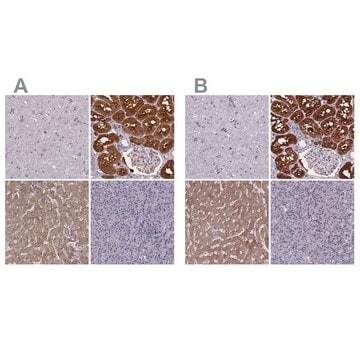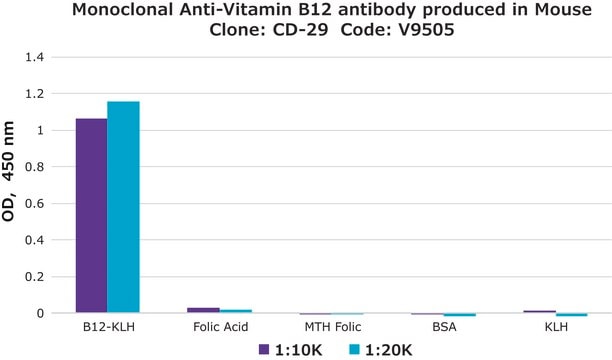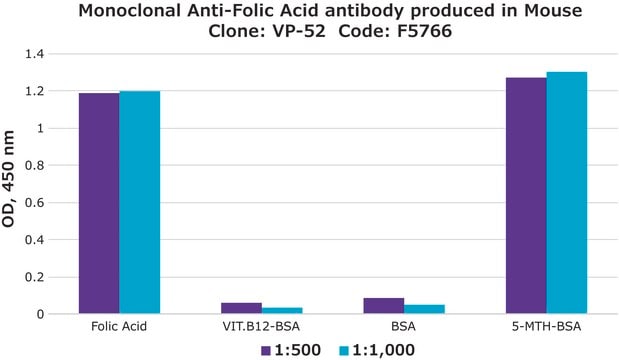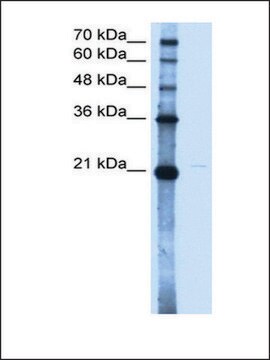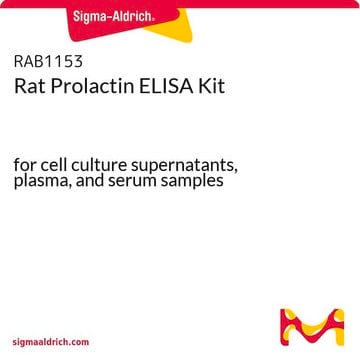SAB4200793
Anti-Folic acid antibody, Mouse monoclonal
clone VP-52, purified from hybridoma cell culture
Synonyme(s) :
Anti-FA, Anti-N-(4-{[(2-amino-4-oxo-1,4-dihydropteridin-6-yl)methyl]amino}benzoyl)-L-glutamic acid, Anti-folacin, Anti-folate, Anti-pteroyl-L-glutamate, Anti-pteroyl-L-glutamic acid, Anti-vitamin B9, Anti-vitamin Bc, Anti-vitamin M
About This Item
Produits recommandés
Source biologique
mouse
Niveau de qualité
Forme d'anticorps
purified from hybridoma cell culture
Type de produit anticorps
primary antibodies
Clone
VP-52, monoclonal
Forme
buffered aqueous solution
Concentration
~1 mg/mL
Technique(s)
immunoblotting: suitable
indirect ELISA: 0.25-0.5 μg/mL using 3 μg/mL folic acid conjugated to a carrier for coating
Isotype
IgG2b
Conditions d'expédition
dry ice
Température de stockage
−20°C
Modification post-traductionnelle de la cible
unmodified
Description générale
In the absence of vitamin B12, 5MTHFA cannot be converted to tetrahydrofolic acid and enter the metabolic pool of 1-carbon fragment acceptors. Since this is the only known metabolic pathway involving 5MTHFA in humans, B12 depletion will cause a decrease in the availability of other folic acid derivatives required for miscellaneous biosynthetic pathways, including thymidylate synthetase, an enzyme necessary for DNA synthesis. Vitamin B12 and folate deficiencies are the most common causes of megaloblastic anemia, abnormal hemopoiesis, interference in the maintenance of normal nerve tissue and general intracellular uptake and function disorders in humans. It is hematologically and clinically indistinguishable thus it is necessary to determine the level of vitamin B12 in the serum and folate in both the serum and red blood cells to establish the etiology of the megaloblastic anemia and treatment respectively.
Monoclonal Anti-Folic acid recognizes folate and an epitope present on both biologically active analog 5MTHFA and folic acid. The antibody reacts with Folic acid or 5MTHFA either free or bound to a carrier, such as KLH or BSA. The antibody binds folate in human plasma and serum (when it is bound to the endogenous folate binder). The antibody does not cross react with tetrahydrofolic (THFA), folinic acid (FNA), dihydrofolic acid (FAH2, citrovorum factor, leucovorin).
Immunogène
Application
Forme physique
Autres remarques
Not finding the right product?
Try our Outil de sélection de produits.
Code de la classe de stockage
12 - Non Combustible Liquids
Classe de danger pour l'eau (WGK)
WGK 1
Certificats d'analyse (COA)
Recherchez un Certificats d'analyse (COA) en saisissant le numéro de lot du produit. Les numéros de lot figurent sur l'étiquette du produit après les mots "Lot" ou "Batch".
Déjà en possession de ce produit ?
Retrouvez la documentation relative aux produits que vous avez récemment achetés dans la Bibliothèque de documents.
Notre équipe de scientifiques dispose d'une expérience dans tous les secteurs de la recherche, notamment en sciences de la vie, science des matériaux, synthèse chimique, chromatographie, analyse et dans de nombreux autres domaines..
Contacter notre Service technique
